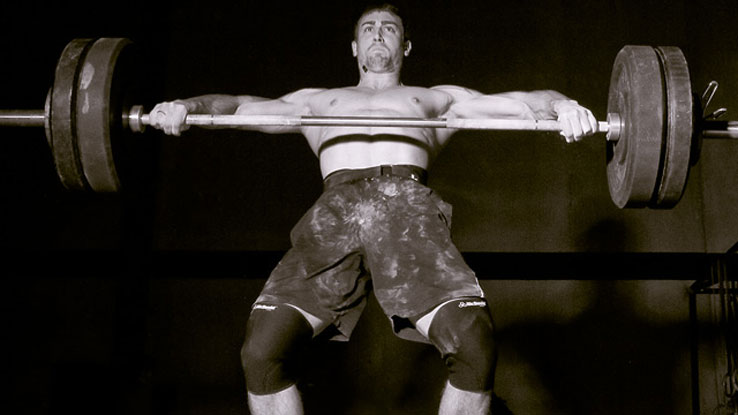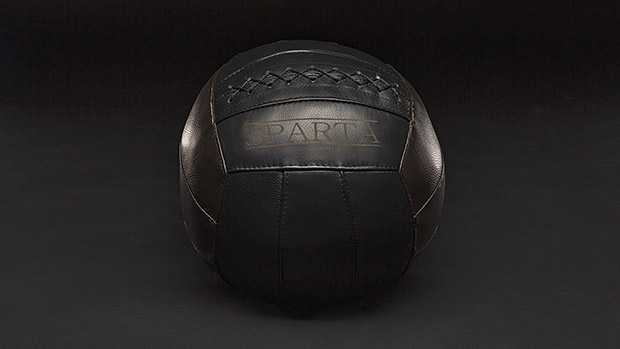Here's what you need to know...
- Station training is partner friendly, mixes different stimuli, can be done indoors or outdoors, and allows you to do more locomotive exercises.
- Simply choose two exercises and set up dedicated areas 10-40 yards apart. You'll perform an exercise at one station and then perform a locomotive exercise to get to the other station, where you'll perform the second exercise.
Conditioning is usually pretty monotonous. We get sucked into a routine, and "routine" is exactly the problem. Variety, however, is a great thing for both physique and sanity. Enter station training.
What is Station Training?
Find a clear area. Choose two exercises and set up dedicated areas 10-40 yards apart. You'll perform an exercise at one station and then perform a locomotive exercise to get to the other station, where you'll perform the second exercise.
Why Station Training?
A few reasons:
- Chunking. Steady state cardio, repeating sprints, complexes, and circuits get monotonous because they're incredibly repetitious. Though station training is certainly repetitious, the chunks are smaller. Many find that time flies because attention is turned to the next thing on the list as soon as fatigue starts to get severe.
- Mix of stimuli. I'll share three different variations that can blend any type of training into an interesting and challenging station workout. Sprints, calisthenics, heavy lifts, volume lifts – they can all have their place.
- Indoor or outdoor. If you're in a cold climate and get that rare beautiful day, station training is a perfect specialty workout for the local park or parking lot. Really, any open space of 10+ yards will work great.
- Partner-friendly. You and a buddy can each start on a different station and work through it together to push each other.
- Locomotive exercises need more love. Too many of us get trapped in our power rack, always lifting heavy but never moving around. We humans used to love running around, killing things, and then eating them... what the hell happened to us? Seriously, though, moving with agility is important, and stations are a good way to blend it into strength training.
The Top 3 Station Schemes
For clarity in programming, think of each complete workout you create – two stations with locomotion in-between – as a "scheme."
Variation 1: Heavy – Dynamic – Heavy (HDH)
In this variation, we'll use stations with dumbbell or barbell exercises set up with a 10-rep weight. The goal is to get 6-8 good reps, which will probably be difficult because you'll be breathing heavily from the locomotive exercise. Good heavy exercise choices are low-technique compound movements that can be performed safely without having to use flawless form – barbell and dumbbell rows, presses, deadlift variations, and squat variations all work well. Ballistic movements like Olympic lifts don't mix well with fatigue.
Dynamic choices include sprints, side shuffles, backpedals, jumps, bounds, hops, and skips. Most commercial gym-goers prefer not to bounce around like a bunny, but for those of you in more private settings or who don't give a shit, jumping, bounding, skipping, and hopping is fantastic for building athleticism and getting the heart rate up.
HDH Scheme Example #1
Stations set 20 yards apart
- Station A: Barbell Push Press
- Locomotive: 5-Line Sprint (up and back twice, ending at opposite station; 100 total yards)
- Station B: Split Stance Dumbbell Row
The sprint is going to become a hard run once fatigue sets in, but that's okay, just push the pace and move fast. Get to the station exercise as soon as possible. That may be near instantaneous for some, or 10 deep breaths later for others. The point is to keep moving, but understand that as long as you're breathing heavily you're still increasing your conditioning, even if you're not pushing iron at that precise moment.
HDH Scheme Example #2
Stations set 10 yards apart
- Station A: Barbell Row
- Locomotive: Side Walk Push Up
- Station B: Dumbbell Reverse Lunge
Variation 2: Dynamic – Heavy – Dynamic (DHD)
In this variation, "dynamic" can mean a lot of things, but in this context it most often means calisthenics or explosive movements – things that will get the heart rate up fast – while allowing semi-rest for the heavy locomotive movement. I suggest 30-60 seconds for the dynamic exercises, or simply going hard and moving on to the locomotive movement when fatigue or boredom gets severe.
Simple calisthenics such as skier jumps, jump rope, plank variations, high knees, jumping jack variations, and mountain climbers work well. More taxing choices for the legs involve squat and lunge jump variations such as squat jumps or split-squat jumps.
The heavy movement will be relatively slow because the weight needs to be so heavy that you barely make it from one station to the next. My favorite choices are heavy farmer's walks, dumbbell lunges, and sled pushes and pulls. (Our gym's 10-yard backward sled pull record is 860 pounds.)
DHD Scheme Example #1
Stations set 20 yards apart
- Station A: Split Squat Jump
- Locomotive: Farmers Carry
- Station B: Band Pull-Apart
DHD Scheme Example #2
Stations set 10-15 yards apart
- Station A: Jump Rope
- Locomotive: Heavy Sled Pull
- Station B: Marching Plank
Variation 3: Volume – Volume – Volume (VX3)
In the volume-based variation, we're looking to get a good pump and a lot of work done. We won't choose calisthenics and we'll let the locomotive exercise and higher rep range (10-15) get the heart rate up and pump blood into the muscles. Mixing compound movements with more characteristically bodybuilding-type movements works well.
VX3 Scheme Example #1
Stations set 20 yards apart
- Station A: Goblet Squat
- Locomotive: Farmer's Walk with 5 shrugs every 5th step
- Station B: Push Up
VX3 Scheme Example #2
Stations set 20 yards apart
- Station A: Hammer Curl to Overhead Press
- Locomotive: Walking Lunge with Fat Grips
- Station B: Sliding Leg Curl
Workout Length and Volume
There are two good options:
- Complete a specified number of sets of each station, using one to three station schemes. Remember, each complete workout you create – two stations with locomotion in-between – is a "scheme."
- Choose a timeframe and work on a scheme until time elapses. I prefer this method because I don't have the brainpower to count during conditioning work.
Two turns at each station is a good starting point, which will provide four locomotive sets and take approximately 8-10 minutes, depending on the exercises. From this, you can tailor the exercises and schemes to suit. Volume schemes can work well as high as three or four turns per station.
Exercise Choices and Pairings
If I'm using only one scheme as a complete workout, I'll typically do a push exercise and a pull exercise as the stations and a leg exercise as the locomotive. This is a simple, balanced workout. Beyond this, you can get deeper into hitting more body parts and movements. A good starting point is the big six, around which I base most simple workouts:
- Push
- Pull
- Hip-Dominant
- Quad-Dominant
- Core
- Rotator Cuff
Beyond choosing balance in the workout, it's a good idea to pick exercises that "rest" one another. If you're doing goblet squats as station A, running sprints as the locomotive, and performing RDLs as station B... you're going to die.
Sure, you'll earn your "brutal leg workout" merit badge, but the quality of every exercise will suffer. I also get concerned when people want to run with exhausted hamstrings. That's not to say you can't have leg exercise overlap – you can – just be smart about it. Moving from leg to upper body exercise is the easiest way to design a sensible station scheme.





